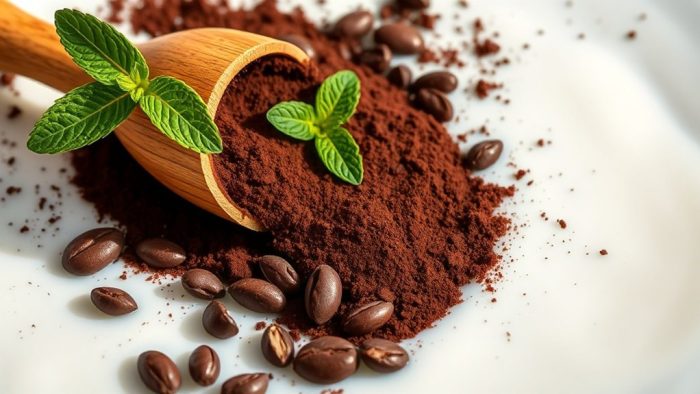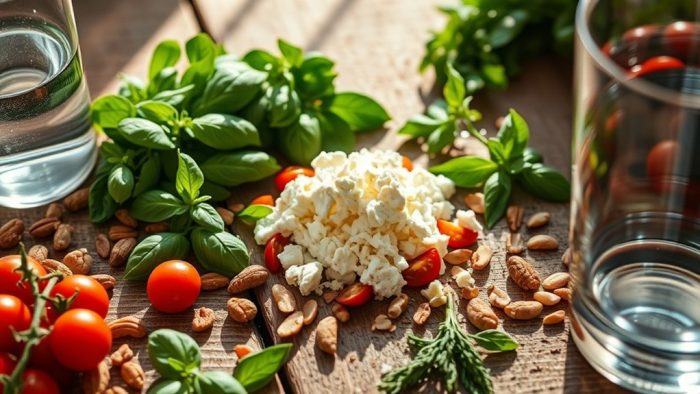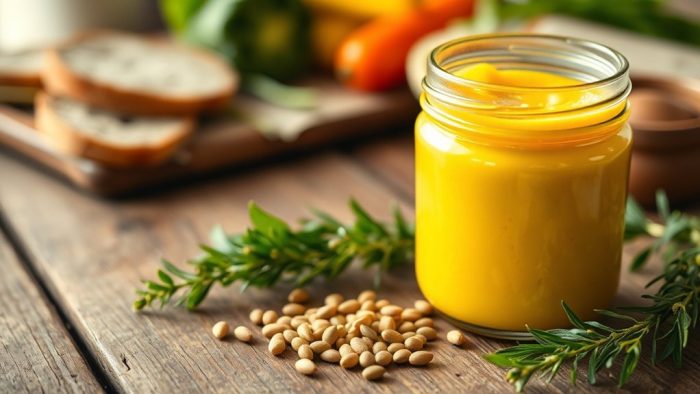Is Gelato Vegan

Traditional gelato isn’t vegan because it’s made with dairy milk and cream as primary ingredients, containing 3-8% milk fat. You’ll also find that many recipes include egg yolks for texture and sometimes gelatin as a stabilizer—all animal-derived products that don’t align with vegan principles. However, you’re in luck: plant-based gelato alternatives are now widely available from brands like Vixen Kitchen and Gigi Gelato, using coconut milk, nut creams, or water bases. Below, you’ll learn how to identify vegan options and even create dairy-free gelato at home.
What Is Gelato and How Does It Differ From Ice Cream

Before determining whether gelato can fit into a vegan diet, it’s essential to understand what this Italian dessert actually contains.
Gelato is made with a higher milk-to-cream ratio than American ice cream, resulting in a product rich in dairy products. The creamy Gelato texture you’ll notice comes from its slower churning process, which incorporates less air into the mixture—making it denser and more flavorful than traditional ice cream.
Traditional gelato contains 3-8% fat compared to ice cream’s 10-18%, and it’s typically egg-free.
However, this doesn’t make it vegan-friendly, as dairy remains the primary ingredient. While some manufacturers now create versions using plant-based ingredients like almond or coconut milk, authentic Italian gelato fundamentally relies on dairy for its characteristic texture and taste.
Traditional Gelato Ingredients: Why Classic Gelato Isn’t Vegan
Traditional gelato’s base recipe relies on milk and cream as primary ingredients, providing its signature dense, creamy texture through dairy fat and proteins.
Most classic gelato recipes incorporate egg yolks to create a custard foundation, which enriches richness while binding the mixture together.
These animal-derived components—dairy and eggs—directly violate vegan dietary principles, making conventional gelato incompatible with plant-based eating patterns.
Dairy-Based Core Recipe
At its core, gelato contains milk and cream as fundamental ingredients, which automatically disqualifies it from vegan status. These dairy components create the signature dense, creamy texture that distinguishes gelato from other frozen desserts.
Traditional recipes often incorporate egg yolks for additional richness, adding another layer of animal products to the formula.
The dairy base provides essential fats and proteins that contribute to gelato’s smooth mouthfeel and slow-melting properties. Unlike plant-based alternatives, these animal-derived ingredients deliver specific functional characteristics that manufacturers must replicate when creating vegan options.
If you’re following a vegan diet, you’ll need to specifically seek out products labeled as vegan gelato. These alternatives use plant-based milks and fats to make vegan gelato that mimics traditional texture without compromising your dietary principles.
Egg Yolks in Custard
Beyond milk and cream, many traditional gelato recipes incorporate egg yolks as a custard base, adding another animal-derived ingredient that excludes the dessert from vegan classification.
You’ll find egg yolks serve multiple functional roles in gelato production:
- Acting as natural emulsifiers that bind fat and water molecules together
- Creating a silky mouthfeel that distinguishes premium gelato texture from standard ice cream
- Providing structural stability during the churning and freezing process
- Contributing richness and depth of flavor to the final product
- Increasing color with their natural golden pigmentation
While modern gelato makers increasingly offer dairy-free flavors using plant-based alternatives, traditional custard-style gelato remains fundamentally non-vegan due to egg yolks.
These alternatives substitute egg yolks with plant-derived thickeners and stabilizers to replicate the characteristic creamy texture without animal products.
Animal-Derived Ingredient Concerns
While dairy and eggs represent the most obvious non-vegan components, gelato often contains additional animal-derived ingredients that aren’t immediately apparent to consumers.
Gelatin, a common stabilizer in gelato varieties, comes from animal collagen and helps maintain texture during storage. You’ll need to scrutinize ingredient labels carefully, as these hidden components can easily go unnoticed.
Beyond the primary dairy content and egg yolks that define traditional recipes, manufacturers may incorporate other animal derivatives for improved consistency and shelf stability.
The challenge lies in identifying these ingredients, which aren’t always clearly labeled. Even gelato marketed as premium or artisanal may contain multiple animal-derived ingredients working together to create that characteristic creamy texture you’d expect from authentic Italian gelato.
Understanding Dairy Content in Gelato Vs Other Frozen Desserts
When comparing frozen desserts, gelato stands out for its milk-forward composition rather than the heavy cream base that defines traditional ice cream. This distinction affects dairy and sugar ratios across dessert categories.
Since a vegan diet excludes all animal products, you’ll find these naturally dairy-free alternatives:
- Sorbet: fruit purée and water create vibrant, invigorating scoops
- Frozen fruit bars: whole fruit blended without dairy additions
- Coconut-based vegan gelato flavors: creamy tropical richness minus animal ingredients
- Cashew cream desserts: smooth, neutral bases that make gelato textures achievable
- Oat milk frozen treats: barista-style oats provide satisfying body
Traditional gelato’s lower fat content compared to ice cream doesn’t make it vegan-compatible. Both contain milk proteins unless manufacturers specifically make gelato using plant-based alternatives designed for dairy-conscious consumers.
Vegan Gelato Options: Brands and Where to Find Them

Several specialty brands have developed plant-based gelato that replicates traditional texture without dairy ingredients.
You’ll find Vixen Kitchen uses organic cashews and maple syrup to create creamy vegan gelato, while Gigi Gelato combines real fruit puree with coconut and dietary fiber.
Puro Vegan Gelato offers water-based options that are both gluten- and soy-free, suitable for multiple dietary restrictions.
Talenti’s sorbetto line provides dairy-free alternatives made from fruit and water.
Traditional gelaterie have also expanded their offerings.
Italian establishments like Della Palma and GROM feature extensive fruit-flavored sorbets with clear allergen labeling.
Many gelaterie worldwide now include vegan gelato options, particularly fruit-based varieties.
When shopping, look for brands specifically marketing dairy-free formulations or visit local gelato shops that clearly label their plant-based selections.
Making Vegan Gelato at Home: Recipes and Techniques
Creating vegan gelato at home requires understanding how plant-based ingredients mimic dairy’s fat content and structural properties. You’ll need unsweetened full-fat coconut milk or other plant-based milks as your base, combined with sugar and cornstarch for proper thickening.
The process involves whisking ingredients together, bringing them to a boil, and simmering until thickened.
Your basic technique includes:
- Cooling the mixture completely before churning
- Straining to remove lumps for improved creaminess
- Adding fruit purees or vegan-friendly extracts for flavor variation
- Churning in an ice cream maker according to manufacturer instructions
- Softening for 15-20 minutes before serving
Homemade vegan gelato maintains ideal texture for two weeks when properly stored.
This straightforward method produces creamy, scoopable results without animal-derived ingredients.
Texture and Flavor Challenges in Plant-Based Gelato

While mastering the preparation methods sets you up for success, replicating traditional gelato’s signature qualities without dairy presents distinct technical hurdles.
You’ll find that plant-based gelato struggles to achieve the creamy texture that defines authentic gelato, since dairy naturally provides essential richness and mouthfeel.
Coconut milk offers luxurious texture but freezes harder than dairy, requiring modified serving techniques. You can improve creaminess by incorporating thickeners like cornstarch or arrowroot powder, which compensate for dairy’s absence.
Balancing fat content proves vital—full-fat coconut milk or blended nut creams effectively mimic traditional richness.
For peak flavor intensity, you’ll need high-quality ingredients: ripe fruits and premium cocoa guarantee satisfying taste experiences.
These strategic adjustments help you overcome plant-based limitations while maintaining gelato’s characteristic indulgence.
The Rise of Dairy-Free Gelato in Italy and Around the World
As veganism gains momentum worldwide, Italy’s gelato industry has undergone a remarkable transformation, with dairy-free options now appearing in approximately 80% of artisanal gelaterias across the country.
You’ll find that artisanal brands like Venchi and GROM are pioneering this movement, crafting vegan gelato that maintains traditional richness without compromising quality.
This evolution reflects the growing demand from consumers following plant-based diets, as well as those with lactose intolerance.
Consider what you’ll encounter:
- Coconut milk-based chocolate creating silky textures
- Almond-infused hazelnut delivering nutty depth
- Soy milk vanilla offering familiar creaminess
- Fruit sorbets bursting with natural sweetness
- Cashew-based pistachio providing authentic taste
These dairy-free gelato options aren’t just alternatives—they’re legitimate culinary achievements.
You’re experiencing rich flavors that appeal to vegans and health-conscious consumers alike, proving innovation can honor tradition.





